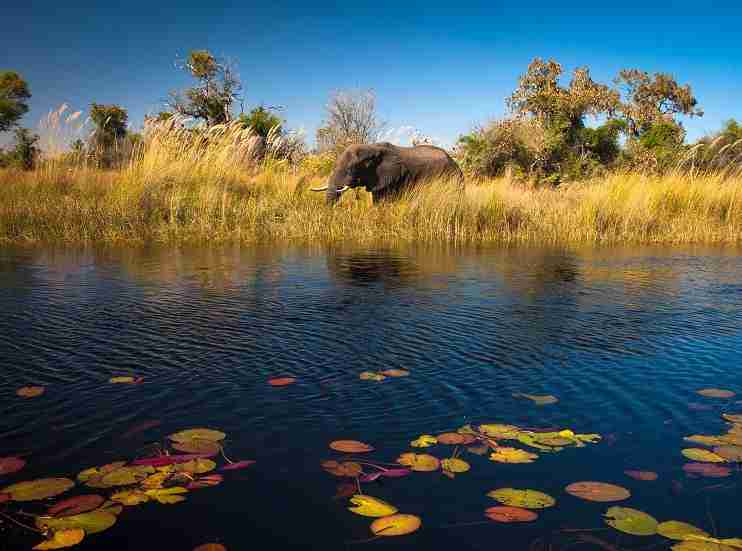Chobe was the first national park ever founded in Botswana, and the third largest. The magic of this green place, set far north of the nation, is the population of lions and elephants which is the main attraction for tourists. A safari at Chobe means to admire incredible hunting scenes, with lions chasing small elephants, or sick ones, or running away from the attack of large groups of adult elephants. It is very exciting to admire wildlife at Chobe, worth the trip. The park, which was founded in 1967, covers 11,700 sq km of surface, and is divided into 4 areas, each one with a typical geographic characteristic.
Exploring Chobe National Park
Let’s start our visit to Chobe National Park from Serondela Riverfront. This first area, set in the north, is mainly a green floodplain with woods of mahogany trees, grasslands, rivers and ponds. Going west, the territory turns into a huge marsh land, Savuti. Once upon a time the Savuti region used to be a large lake, then dried up by faults displacements that only left ponds and marshes. Dead trees and mud cover about 10,800 sq km.
Marsh turns into a lagoon as you approach Selinda Reserve, near the area called Linyanti. The territory is again floodplains and woods, here, home to many animals. Between the riverfront and the marsh, there is a large dry region where the only vegetation you will see is bush and yellow grass.

Wildlife at Chobe
Every single area of Chobe National Park is home to specific animals, some of the most beautiful in Africa. This is the paradise of safari because the typical African fauna lives over here. The conditions of the territory let people get close to them as they live in their proper habitat. At Serondela Riverfront’s woods you can meet elephants, giraffes and buffalos living along the Chobe river’s banks. This is also home to antelopes and many birds, especially water birds.
At Savuti live wildebeests, zebras, impalas and rhinoceros. Here you can see lions chasing elephants and hyenas and cheetahs trying to have their role as well! Linyanti and Selinda marshes host crocodiles and hippopotami, while leopards, antelopes and wild dogs run along the banks. Not many tourists like to visit the dry hinterland, so the wild beasts of the place – mainly eland antelopes – live free.
More to see at Chobe National Park
A very interesting place at Chobe National Park is the rocky hills of the inner territories. There you could visit the caves where prehistoric tribal paintings are still visible. They are the cultural heritage of men who used to live in this region, long before Botswana existed as a nation. They were the San Bushmen tribe, or Basarwa people.
Modern inhabitants of the region live on the borders of the park, or in the only town set inside – in Serondela area, to be exact: Kasane, the town of lodges and crocodiles!
Information about the Park
Many roads of Chobe National Park are sandy, or muddy. When it rains, it is impossible to drive through the region. You must hire a guide or a tour operator with 4×4 jeep car, or rent a jeep on your own. Kasane is the reference town for any safari, trip or excursion to the Park. There is a direct road connecting Kasane with Chobe, especially with the Savuti Gate and the dry land through Nogatsaa Gate.
In order to get to Kasane, and to the Park, you can drive along the motorway connecting it with Francistown and Gaborone. Or you can take a national flight from Gaborone to land at Kasane’s Airport.



